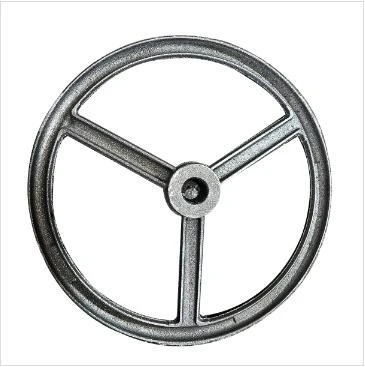- Afrikaans
- Albanian
- Amharic
- Arabic
- Armenian
- Azerbaijani
- Basque
- Belarusian
- Bengali
- Bosnian
- Bulgarian
- Catalan
- Cebuano
- China
- China (Taiwan)
- Corsican
- Croatian
- Czech
- Danish
- Dutch
- English
- Esperanto
- Estonian
- Finnish
- French
- Frisian
- Galician
- Georgian
- German
- Greek
- Gujarati
- Haitian Creole
- hausa
- hawaiian
- Hebrew
- Hindi
- Miao
- Hungarian
- Icelandic
- igbo
- Indonesian
- irish
- Italian
- Japanese
- Javanese
- Kannada
- kazakh
- Khmer
- Rwandese
- Korean
- Kurdish
- Kyrgyz
- Lao
- Latin
- Latvian
- Lithuanian
- Luxembourgish
- Macedonian
- Malgashi
- Malay
- Malayalam
- Maltese
- Maori
- Marathi
- Mongolian
- Myanmar
- Nepali
- Norwegian
- Norwegian
- Occitan
- Pashto
- Persian
- Polish
- Portuguese
- Punjabi
- Romanian
- Russian
- Samoan
- Scottish Gaelic
- Serbian
- Sesotho
- Shona
- Sindhi
- Sinhala
- Slovak
- Slovenian
- Somali
- Spanish
- Sundanese
- Swahili
- Swedish
- Tagalog
- Tajik
- Tamil
- Tatar
- Telugu
- Thai
- Turkish
- Turkmen
- Ukrainian
- Urdu
- Uighur
- Uzbek
- Vietnamese
- Welsh
- Bantu
- Yiddish
- Yoruba
- Zulu
Nov . 17, 2024 09:21 Back to list
Custom Concrete Pipe Mould Bottom Ring for Unique Stamp Design
Custom Stamp Concrete Pipe Mould Bottom Ring A Comprehensive Overview
In the realm of construction and civil engineering, the use of concrete pipe moulds stands as a cornerstone for creating robust and durable infrastructure. Among the various components essential for the effective production of concrete pipes, the custom stamp concrete pipe mould bottom ring plays a critical role. This article will explore the significance, design, and benefits of utilizing custom-stamped bottom rings in the manufacturing of concrete pipes.
Understanding Concrete Pipe Moulds
Concrete pipes are widely used for drainage, sewage, and various plumbing applications due to their strength and longevity. The production of these pipes typically involves the use of moulds that shape the concrete into the desired form. The mould consists of various components, including the bottom ring, which serves as the foundational element in the mould assembly. Without a well-designed bottom ring, the structural integrity of the pipe can be compromised, leading to inconsistencies and defects in the final product.
The Role of the Bottom Ring
The bottom ring of a concrete pipe mould is essential for stabilizing the pipe during the curing process. It provides a secure base, ensuring that the concrete maintains its shape as it sets. The bottom ring must be manufactured to precise specifications, considering factors such as diameter, thickness, and material properties. A custom stamp design can enhance these properties by adding unique features tailored to the specific requirements of the project at hand.
Customization Tailoring to Specific Needs
One of the primary advantages of custom stamp concrete pipe mould bottom rings is the ability to tailor them to specific project needs. Manufacturers can customize the design, dimensions, and materials based on the application. For instance, if a project requires higher durability or resistance to certain environmental conditions, a custom design can incorporate reinforced materials or special coatings.
custom stamp concrete pipe mould bottom ring

Moreover, the stamping process can also allow for the integration of identification marks, serial numbers, or other necessary inscriptive elements directly into the bottom ring
. This not only aids in inventory management but also ensures traceability of the moulds used in various projects.Enhanced Production Efficiency
Utilizing custom stamp concrete pipe mould bottom rings can significantly enhance production efficiency. A well-designed bottom ring reduces the likelihood of defects, ensuring that each pipe produced is uniform and meets the required specifications. This consistency translates into fewer materials wasted and a lower likelihood of rework, therefore optimizing the production cycle.
Additionally, custom moulds can streamline the pouring process, allowing for quicker setups and reduced downtime between production runs. This efficiency can lead to increased output and ultimately a higher return on investment for companies involved in concrete pipe manufacturing.
Sustainability Considerations
In today’s construction industry, sustainability is a crucial concern. The development of custom stamp concrete pipe mould bottom rings can contribute to more sustainable practices. By optimizing the use of materials and enhancing production efficiency, manufacturers can minimize waste and reduce their carbon footprint. Furthermore, incorporating environmentally friendly materials into the design of the bottom rings can align production processes with green building practices.
Conclusion
Custom stamp concrete pipe mould bottom rings are an integral component of modern concrete pipe production. Through customization, manufacturers can ensure that these bottom rings meet precise specifications, enhancing the overall quality and efficiency of the production process. As the demands of the construction industry continue to evolve, the importance of tailored solutions like custom stamp bottom rings will only grow, paving the way for innovative and sustainable practices in concrete pipe manufacturing. Embracing this custom approach not only benefits individual projects but also contributes to the advancement of the industry as a whole.
-
8mm Thin-Walled Cast Steel Manhole Cover Pallet Bottom Ring | Durable
NewsAug.04,2025
-
Premium Cast Iron Water Main Pipe: Durable, Corrosion-Resistant
NewsAug.03,2025
-
Durable Cast Iron Water Mains | AI-Optimized Systems
NewsAug.02,2025
-
High-Efficiency Propane Boiler for Baseboard Heat | Save Energy
NewsAug.01,2025
-
Premium Source Suppliers for Various Gray Iron Castings
NewsJul.31,2025
-
Durable Cast Iron Water Main Pipes | Long-Lasting
NewsJul.31,2025


